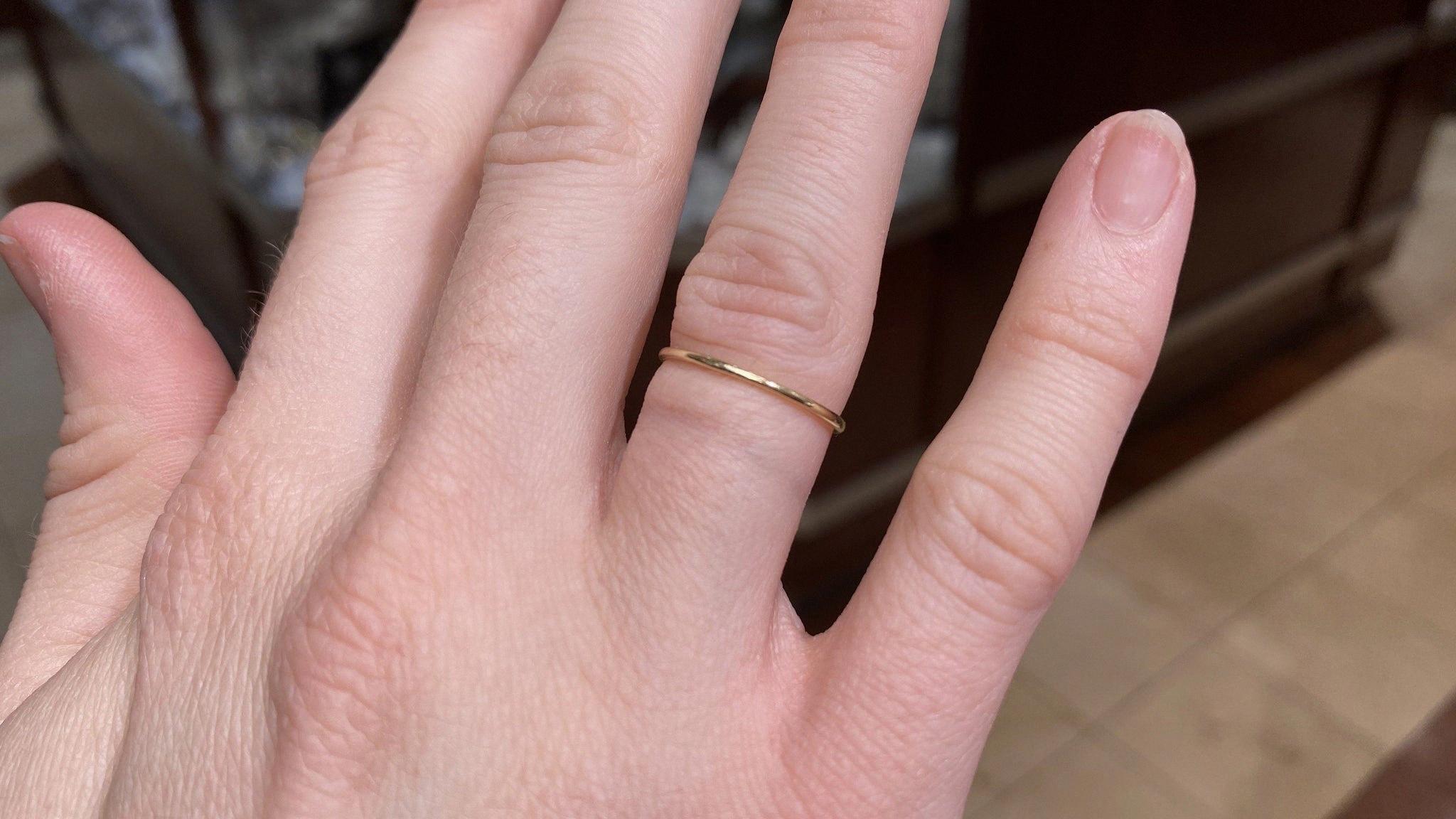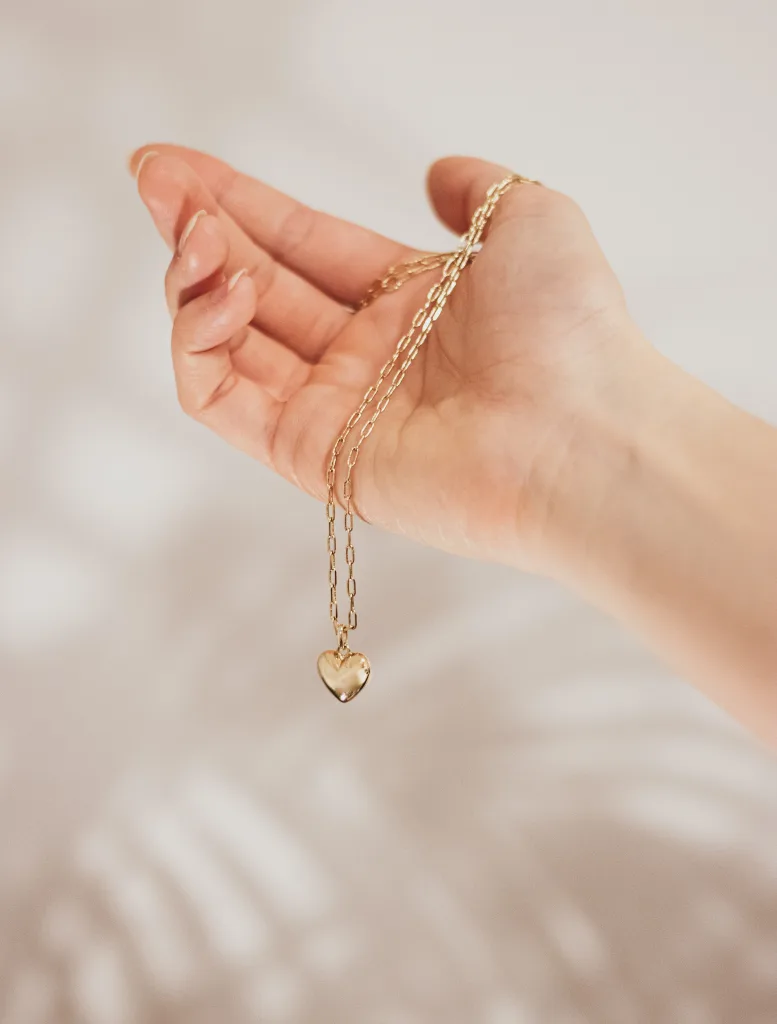Gold jewelry is a popular choice for many people due to its beauty and durability. However, there is a common concern among jewelry wearers regarding whether or not gold jewelry, specifically 18k gold, can turn their skin green. In this article, we will explore the properties of 18k gold and its potential to cause skin discoloration.
Firstly, it is important to understand what 18k gold actually means. The “k” stands for karat, which is a unit of measurement used to determine the purity of gold. 24k gold is considered to be pure gold, but it is too soft for jewelry making. Therefore, other metals are added to gold to make it stronger and more durable. In the case of 18k gold, it is composed of 75% gold and 25% other metals such as copper, silver, or zinc.
The addition of these other metals is what can potentially cause skin discoloration. Copper, in particular, is known to react with the natural oils and acids in our skin, leading to a greenish residue. However, the likelihood of this happening varies from person to person. Some individuals may be more prone to experiencing skin discoloration, while others may not be affected at all.
It is worth noting that 18k gold is less likely to cause skin discoloration compared to lower karat gold jewelry, such as 14k or 10k. This is because the higher gold content in 18k gold reduces the amount of other metals present, thus decreasing the chances of a chemical reaction occurring.
To further minimize the risk of skin discoloration, you can consider opting for gold-plated jewelry. Gold-plated jewelry has a base of another metal, such as brass, which is then coated with a thin layer of gold. This type of jewelry is more affordable but may wear off over time, exposing the base metal and potentially causing skin discoloration.
If you are concerned about skin discoloration, there are alternative materials that you can consider for your jewelry. Stainless steel, platinum, and rhodium-plated materials are all hypoallergenic and less likely to cause any skin reactions. 925 sterling silver is also a good option as it is composed of 92.5% pure silver and 7.5% other metals, which are usually copper or zinc.
While it is possible for 18k gold jewelry to cause skin discoloration, it is less likely compared to lower karat gold jewelry. The reaction between the metal alloys and the skin’s natural oils and acids can result in a greenish residue. However, the likelihood of experiencing this discoloration varies from person to person. If you have sensitive skin or are prone to skin reactions, you may want to consider alternative materials for your jewelry.
Can Real 18 Karat Gold Turn Your Finger Green?
Real 18 karat gold can potentially turn your finger green, although it is less likely to do so compared to lower karat gold or gold-plated jewelry. The green discoloration on the skin is not caused by the gold itself, but rather by the other metals that are mixed with it.
Even though 18 karat gold contains a higher percentage of pure gold (75%) compared to 14 karat gold (58%), it still contains other metals like copper, silver, or zinc. These metals can react with the acids in your skin, causing a chemical reaction that results in the greenish discoloration.
However, it’s important to note that not everyone will experience this discoloration. The reaction depends on individual body chemistry and sensitivity to certain metals. Some people may have no reaction at all, while others may experience discoloration even with the purest of gold jewelry.
To minimize the chances of experiencing green discoloration, you can consider the following options:
1. Opt for higher karat gold: Jewelry made of 18 karat or even 24 karat gold contains a higher percentage of pure gold, reducing the likelihood of skin discoloration.
2. Choose jewelry with a different metal alloy: If you are particularly sensitive to certain metals, you may want to consider jewelry made with alternative metal alloys that are less likely to cause skin reactions. For example, platinum, palladium, or titanium are hypoallergenic options.
3. Apply a protective coating: Some jewelers offer a coating or plating service, where they apply a protective layer to the jewelry that comes in contact with your skin. This can act as a barrier, reducing the likelihood of any reaction or discoloration.
4. Keep your jewelry clean: Regularly cleaning your gold jewelry can help remove any buildup of oils, sweat, or dirt that may contribute to skin discoloration. Use a mild soap and warm water, and gently scrub the jewelry with a soft brush or cloth.
Remember, the likelihood of gold causing skin discoloration is generally low, especially with higher karat gold. However, individual reactions can vary, so it’s important to pay attention to how your skin reacts and take the necessary precautions if needed.

Why Does My 18 Karat Gold Ring Turn My Finger Green?
There are a few reasons why your 18 karat gold ring may be turning your finger green. One possibility is that the ring is not actually made of pure gold, but rather an alloy that contains other metals. Pure gold is a very soft metal, so it is often mixed with other metals like copper, silver, or zinc to increase its durability and strength. These additional metals can react with the oils and acids on your skin, causing a chemical reaction that leads to the green discoloration.
Another factor that can contribute to this green residue is oxidation. When metals like copper or silver come into contact with air and moisture, they can oxidize and form a layer of tarnish. This residue can transfer to your skin, especially if you sweat or come into contact with water while wearing the ring. The oxidation process is often accelerated by factors such as humidity, exposure to certain chemicals, or even the pH level of your skin.
It is worth noting that this green discoloration is generally harmless and does not pose any health risks. The metals in the alloy are common and widely used in jewelry making. The green color itself is caused by the formation of copper compounds, which are typically not harmful to the skin. However, if you are experiencing any irritation or discomfort, it is recommended to remove the ring and consult a dermatologist.
To prevent or minimize the green discoloration, you can try the following measures:
1. Keep the ring clean and dry: Regularly clean the ring with a mild soap and warm water, and make sure to dry it thoroughly afterward. This can help remove any residue or moisture that may contribute to the oxidation process.
2. Apply a protective coating: You can consider applying a clear nail polish or a jewelry sealant to the inside of the ring. This creates a barrier between your skin and the metal, reducing the chances of oxidation and discoloration.
3. Remove the ring during activities: Take off the ring when you engage in activities that may cause excessive sweating or expose it to chemicals, such as exercising, swimming, or using cleaning products.
4. Consider a different metal or coating: If the green discoloration is persistent and bothersome, you may want to explore alternative options, such as choosing a different type of metal for your jewelry or opting for a hypoallergenic coating.
Remember, the green discoloration is a common occurrence with certain types of jewelry, and it does not necessarily indicate poor quality or harm to your health. However, if you are concerned or experiencing any adverse reactions, it is always best to consult a professional jeweler or dermatologist for personalized advice.
Can You Wear 18k Gold Everyday?
You can wear 18k gold jewelry every day. 18k gold is made up of 75% pure gold and 25% other metals, which makes it more durable than higher karat golds like 24k. This means that 18k gold is less likely to scratch or bend compared to 24k gold. However, it is still important to take care of your 18k gold jewelry to ensure its longevity.
Here are some tips for wearing 18k gold jewelry every day:
1. Avoid exposing your gold jewelry to harsh chemicals, such as chlorine or bleach, as they can damage the metal. It’s best to remove your jewelry before swimming or using cleaning products.
2. Take off your gold jewelry before engaging in activities that may cause physical damage, such as sports or heavy lifting. While 18k gold is more durable than higher karat golds, it can still be scratched or dented if subjected to excessive force.
3. Store your gold jewelry separately to prevent scratching. You can use a soft cloth or jewelry pouch to keep your pieces safe when you’re not wearing them.
4. Clean your gold jewelry regularly to maintain its shine. You can use a mild soap and warm water to gently clean the pieces, and then pat them dry with a soft cloth. Avoid using abrasive materials or harsh chemicals that can damage the gold.
By following these guidelines, you can enjoy wearing your 18k gold jewelry every day without worrying about it losing its beauty or durability.
What Gold Does Not Turn Your Skin Green?
Gold itself does not typically cause skin to turn green. However, some gold jewelry may contain other materials or metals that can cause a reaction on sensitive skin, resulting in a greenish discoloration. To avoid the green finger, it is important to choose gold jewelry that is made from safe and hypoallergenic materials.
Here are some types of gold that are less likely to cause skin discoloration:
1. 24K Gold: Pure 24 karat gold is the least likely to cause any skin reactions. However, it is very soft and not suitable for everyday jewelry due to its malleability.
2. 18K Gold: 18 karat gold contains 75% pure gold and a higher percentage of other metals such as copper, silver, or palladium. It is less likely to cause skin irritation compared to lower karats.
3. 14K Gold: This is a popular choice for jewelry as it contains 58.3% pure gold, making it durable and less likely to tarnish or cause skin reactions.
4. White Gold: White gold is an alloy of gold and other white metals such as silver, nickel, or palladium. To prevent any skin reactions, it is often plated with rhodium, a hypoallergenic metal. However, over time, the rhodium plating may wear off, revealing the underlying metals that can cause a reaction in some individuals.
It is important to note that individual sensitivities can vary, and what works for one person may not work for another. If you have a known sensitivity to metals, it is advisable to opt for gold jewelry that is specifically labeled as hypoallergenic or made from materials like stainless steel, platinum, or sterling silver, which are less likely to cause skin irritation.
Remember, regular cleaning and maintenance of your gold jewelry can also help prevent any discoloration or reactions on your skin.

Conclusion
18k gold is a high-quality option when it comes to gold jewelry. With its 75% pure gold content, it is less likely to cause skin discoloration compared to lower purity gold alloys. The absence of other metals that can oxidize helps maintain the beauty of the jewelry, allowing you to wear it daily without worrying about green discoloration. Although it may be more expensive than lower purity gold options, the quality and durability of 18k gold make it a worthwhile investment. So, if you want to enjoy the beauty of gold jewelry without the hassle of skin discoloration, 18k gold is definitely the way to go.
